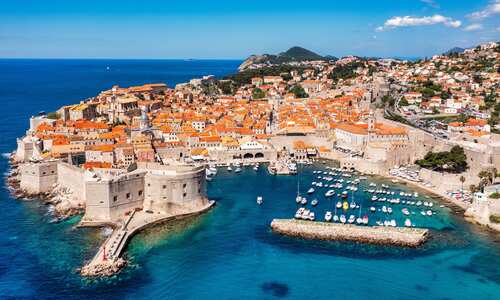Introduction
Italy is a treasure trove of Mediterranean history and culture; a country of crumbling ruins and gilded palazzos; of revered artworks and religious seats. It's almost impossible to ignore the richness of it all when you travel here, though the food is a worthy distraction. Gaze up at the leaning tower of Pisa, explore the floating walkways of Venice or wander among the columns of the ancient Colosseum. Even in the tiniest towns, a sense of history is evident simply in the families that pass down recipes and trades from generation to generation.
Historic Cities

Roman Forum
Italy's many famous cities are home to some of the world's greatest architecture and most-visited attractions. In Rome, the Pantheon, the Colosseum, the Trevi Fountain, and the Vatican City – home to the spectacular St. Peter’s Basilica – are undeniable highlights. In Venice, the very streets are a historic sight themselves, winding between networks of narrow canals that lead to the Grand Canal – the centre of trade to the Republic since the Middle Ages. In Florence, home of the Renaissance, the iconic Duomo cathedral dominates the city's skyline, and Michelangelo’s “David” sculpture draws the crowds. And, in the Emilia-Romagna region, Piacenza, Palma, Modena and Bologna showcase everything from Byzantine churches and UNESCO World Heritage sites to grand opera houses and the birthplace of balsamic vinegar.
Iconic Landmarks

Pompeii
All across Italy, iconic landmarks bring to life historic events, many outside of the main cities. In southern Italy’s Campania region, not far from the picturesque Amalfi Coast and the Bay of Naples, lies Pompeii. Once a vibrant Roman city, Pompeii was buried under meters of volcanic ash after Mount Vesuvius erupted in 79 A.D. Today, it is a perfectly preserved window into the past, and the most-visited archaeological site in the world. Then, in the country's northwest, along the Italian Riviera coastline, lies historic Cinque Terre, comprising five villages – Monterosso al Mare, Vernazza, Corniglia, Manarola, and Riomaggiore. The area was long considered a strategic point of defence in times of conflict, and is now a UNESCO World Heritage site. The list is endless; from that oh-so-famous tower in Pisa to the vast Arena di Verona, Italy is full of icons.
Hidden History

Agrigento, Sicily
Away from Italy's busiest cities, a little off the beaten track, there are plenty of historical gems to be uncovered. In Puglia, right at the heel of the Italian boot, Trani's highlights include a hilltop cathedral and a church built by the Knights Templar in the 12th century, and in the nearby UNESCO-listed town of Matera, thousand-year-old dwellings cling to the cliffs. The strange conical-roofed houses known as trulli, unique to Puglia, remain a mystery to this day. And, away from the mainland, Sicily is dotted with stunning Arab-Norman architecture, ancient villas, and the millennia-old temple wonders of Agrigento.







